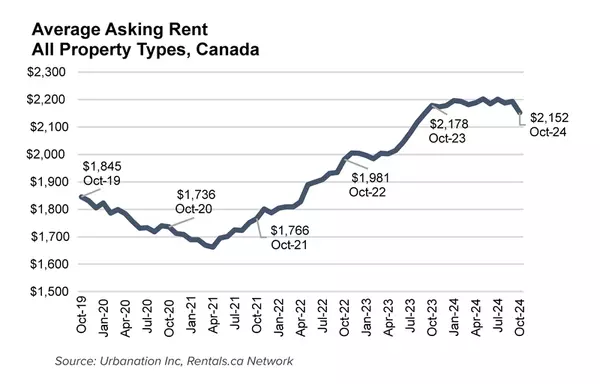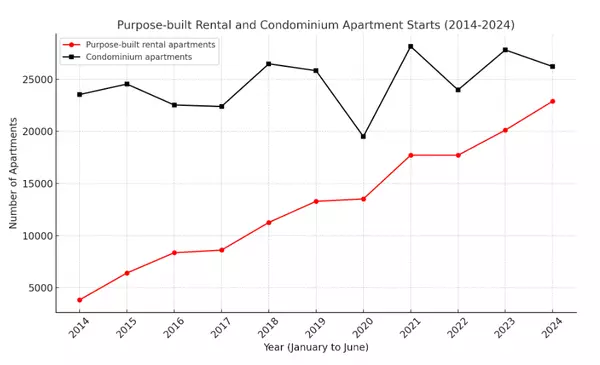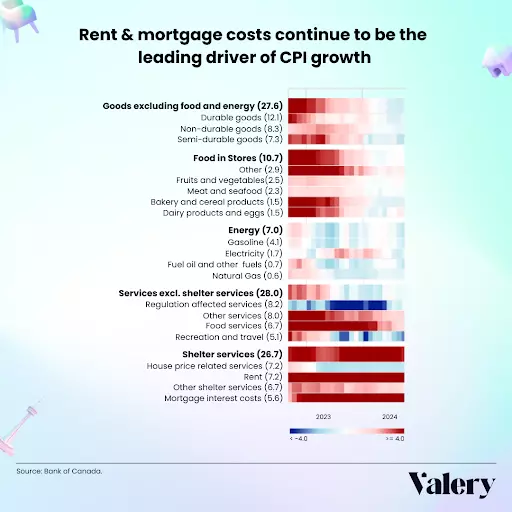
Owner allowed to maintain property’s use as three dwelling units despite zoning bylaw changes
Co-authored by Christina Tassopoulos QUICK HITS The judge extended a homeowner’s time to appeal an Order to Comply because it was based on a misunderstanding by the owner and the municipality of the property’s legal use. Three complaints were issued from 2013 to 2021 about the building’s construction without a permit, an increase in the number of dwelling units and a zoning bylaw contravention for which an Order to Comply was issued. The homeowner eventually appealed this decision. The court rescinded the Order to Comply and required the homeowner to only use his property for three dwelling units. Municipalities have zoning bylaws that regulate the number of separate residential units allowed in a property, and violation of these bylaws can result in orders to comply — often meaning expensive renovation expenses among other penalties. In Vitale v. Toronto (City of), the Ontario Superior Court of Justice extended a homeowner’s time to appeal an Order to Comply because when it was issued, it was based on a misunderstanding by the owner and the municipality of the property’s legal use. The property and its zoning The property was a three-storey building constructed in about 1927. In 1963, it was zoned by the City of Toronto as a single-family dwelling. Sometime between 1927 and 2011, the property had been converted from a single-family dwelling to a five-unit residential multiplex. In 2011, the applicant (Vitale) purchased the property. It had multiple entrances and five separate dwelling units at this point. Vitale moved into one unit and rented out the other four. Before the purchase, Vitale hired a conveyancing lawyer to inquire about whether a three-family dwelling was legal (it’s not clear why the conveyancing lawyer inquired about a three-unit dwelling as opposed to five, but it could have been because only three units were occupied at the time). The City confirmed that at the time it was built in 1927, there were no zoning by-laws in effect, but at present, the property was zoned for a single-family dwelling and there were no records confirming the dwelling had three apartment units. Vitale was told to satisfy himself as to whether the uses complied with the zoning bylaw and the Ontario Building Code. Repeated complaints In 2013, Vitale began constructing a deck in the backyard. The City received a complaint that this was happening without a permit, so they issued an Order to Comply which required Vitale to obtain a permit. Vitale submitted an application, which falsely described the property as a detached single-family dwelling and included a site plan describing the same. The City issued a permit. In 2017, the City received a complaint that there was an increase in the number of dwelling units in the property. An inspector attended and Vitale explained he’d recently engaged an architect to design and construct a new single-family dwelling at the property and planned to submit the permit application within four to six months. Nothing significant occurred for several years. In 2021, the City received another complaint. This one was from a tenant in the upstairs unit, indicating that the property was being used as a five-unit multiplex and contravened zoning and the Ontario Building Code. The City inspected and concluded that the property had originally been a single-family dwelling but had been altered to be a multiplex with five apartment units. On June 7, 2021, the City issued an Order to Comply with the Building Code Act requiring Vitale to “revert” the use of the building into a three-unit dwelling. But, as far as Vitale was aware, the building had never been used as a three-unit dwelling. Eventual appeal Although Vitale engaged in discussions with the City, he did not appeal the Order to Comply. The City delivered a demand letter in February 2022 and, again, Vitale did not appeal it. In May 2022, he was served with a summons to appear before the Ontario Court of Justice. In September of that year, Vitale applied to the Superior Court of Justice for an appeal of the Order to Comply (beyond the deadline for doing so). Under section 25(2) of the Building Code Act, a judge may extend the time for appealing if they’re satisfied there are reasonable grounds for the appeal and for applying for the extension, which typically requires a reasonable explanation for the delay. Main issue: Number of units converted before and after 1963 bylaw is unknown The application judge felt the main issue was it was unknown how many units were converted before the enactment of the zoning bylaw in 1963, and how many were converted after that. Any use that was established before 1963 and continued uninterrupted afterward could be considered a “legal non-conforming use” — meaning it could continue despite the enactment of the zoning bylaw. To prove a legal non-conforming use, a party must prove that 1) the use of the land, building or structure was lawful at the time of the enactment of the zoning restriction (in this case 1963), and 2) the use continued after that. On the other hand, any converted use that happened after 1963 besides as a single-family dwelling would have contravened the zoning bylaw. The City’s Order to Comply required that Vitale submit plans and obtain the necessary permits to change the occupancy of the building from three dwelling units to five dwelling units, or to revert the building to its legal use. The judge commented that neither side seemed to understand that the only thing Vitale needed to do to comply with the Order was to decrease the total tenancy by one unit since only three units were being rented out (aside from his own family’s residence). Vitale needed to terminate one of the existing tenancies or vacate his unit to revert to the last legal use as a three-unit multiplex. Vitale treated ‘fairly and reasonably’ as City could have sued for bylaw contravention The City had tried unsuccessfully for over a decade to determine whether Vitale had created a legal non-conforming use. After it issued the Order to Comply, Vitale tried to appeal as he firmly believed his plan to restore the property to a single-family dwelling should have been reasonable, arguing that the Order to Comply was an example of a bureaucracy gone amok and was a “Kafkaesque impossibility” since the City wanted him to revert a building to something that never existed. Vitale argued that the City had no evidence on which to make its Order to Comply and that it ought to be rescinded. The judge determined that the City had treated Vitale very fairly and reasonably since they could have sued Vitale for contravening the bylaw, which would have placed the onus on him to prove that the property had been converted before the 1963 bylaw enactment. Prosecuted for a crime not committed The flaw in the City’s case was that they issued an Order to Comply under section 10(1) of the Building Code Act, stating in part, “[e]ven though no construction is proposed, no person shall change the use of a building”. It seemed the City assumed that Vitale had purchased the property as a three-family dwelling, that this was a legal non-conforming use and that he’d changed the property to a five-unit dwelling without a building permit. However, evidence showed that Vitale did not change the use of the property. When he purchased it in 2011, it was already a five-unit dwelling. Then, when the Order to Comply was issued, there were only four units being occupied, and a reversion to a three-unit dwelling, which the City believed to be the last legal non-conforming use, could have been achieved without any renovations at all but by vacating his own unit or terminating one of the tenancies. So, Vitale was being prosecuted for an offense he hadn’t committed. The court’s decision — an ‘ironic result’ The application judge noted that the Building Code Act was legislation for public health and welfare and was to be interpreted broadly and liberally. Here, the court decided to rescind the City’s Order to Comply and require that Vitale only use his property for three dwelling units. The application judge noted that the ironic result was that had Vitale complied with the Order to Comply in the first place he not only would have avoided prosecution and the appeal, but it would not have interfered with his ultimate plans to demolish the multiplex and to build a single-family home, which was permitted.

Climate Change and Real Estate Values
On March 26th, a collection of Canadian real estate leaders, convened by R-LABS, unveiled the 2024 Industry Innovation Agenda, as part of addressing urgent real estate and housing challenges. It comes in response to a report stressing the challenges facing the real estate sector and steps required to address issues with innovative approaches. R-LABS intends to allocate around $1 million towards backing early-stage startups dedicated to tackling the primary obstacles encountered by the real estate sector in 2024. It urges contributions “across the board” to spearhead efforts in confronting these challenges. In addition to addressing pervasive housing affordability concerns, there is a call for solutions to sustainability and climate resilience challenges. Impacts on Real EstateIn addition to environmental concerns, these climate resilience concerns have an impact on the real estate market, making this announcement of even further interest to the real estate interest.Canadians, particularly younger generations, are increasingly aware of climate change and its repercussions. This awareness is shaping their investment decisions, employment choices, and other actions. It’s likely that they’ll favour commercial real estate entities, properties, and investment portfolios that demonstrate a commitment to climate action over those that do not. As many as 60 percent of young homeowners considered the possible effects of climate change when purchasing their residential property.As a result, some organizations, like Local Logic and Climate Check, are starting to provide climate risk data for real estate properties in the US and Canada.While some areas of higher risk may face negative impacts in their real estate markets, cities that embrace sustainability may see a rise in popularity, and individual properties with sustainable features will have increased value. A report from the Intact Centre on Climate Adaptation, University of Waterloo, indicated that, over the past eight years, catastrophic flooding in communities resulted in an average 8.2% reduction in the final sale price of houses, 44.3% reduction in the number of houses listed for sale, and 19.8% more days on market to sell a house. The study focused on five Canadian cities, each of which experienced catastrophic flooding between 2009 and 2020. It also indicates that climate change could reduce the value of homes in Canada by as much as 15% by 2050. The US commercial real estate sector has already felt the financial repercussions of severe weather events, offering insights into potential impacts for Canada’s commercial real estate market. For example, properties affected by Hurricane Sandy saw a sharp decline in value, ranging from 17% to 22%, while housing prices within New York’s flood zones experienced an 8% decrease by 2017, largely due to heightened risk perceptions among potential buyers.A study by RICS revealed that the frequency of floods could affect property values due to issues like restricted physical access, disruptions to business operations for tenants, and the long-term effects of rising temperatures. With approximately half a million buildings in Canada at risk of flooding, many of which aren’t accounted for in government flood maps, there’s a pressing need for infrastructure owners and investors to assess and manage both current and future climate-related risks.Fires and flooding are identified as the primary physical risks in Canada, with fires now ranking among the country’s top hazards. Despite this, flooding remains a significant threat, responsible for 40% of weather-related disasters since 1970.Resilient CitiesThe good news is that CBRE’s North American City Sustainability Study places Montreal, Ottawa, Toronto, and Winnipeg in their Top 10 Most Resilient Cities. This recognition stems from their pledge to achieve net zero carbon or greenhouse gas emissions by 2050, along with their increased adoption of renewable energy in the last five years.

March is Fraud Prevention Month: Navigating Real Estate Safely
As we recognize March as Fraud Prevention Month, it’s pivotal that we turn our attention to a particularly insidious threat: real estate fraud. In the vibrant markets of Ontario and Toronto, where the stakes are high, the impact of fraudulent activities can be devastating, affecting unsuspecting buyers, sellers, and the integrity of the real estate industry. Real estate fraud comes in many forms, from identity theft and title fraud to mortgage fraud and investment scams. The consequences can range from financial loss to significant legal complications. However, armed with knowledge and vigilance, we can protect ourselves and our investments from these deceptive practices. Understanding Real Estate Fraud Title Fraud: This occurs when a fraudster uses stolen personal details or forged documents to transfer a property’s title without the rightful owner’s consent. Mortgage Fraud: This involves providing false information to obtain a mortgage. It can be committed by individuals inflating their income or by professionals engaging in more elaborate schemes. Investment Scams: These schemes promise high returns on real estate investments that are nonexistent, overvalued, or significantly misrepresented. Preventive Measures Verify Credentials: Always check the credentials of real estate professionals. This includes agents, brokers, and lawyers. Safeguard Personal Information: Be cautious about sharing sensitive information, especially in response to unsolicited requests. Conduct Due Diligence: Insist on visiting properties, obtaining independent appraisals, and researching thoroughly before making any investment. Professional Advice: Before finalizing transactions, consult with reputable professionals to identify potential risks or irregularities. Report Fraud: If you encounter or suspect fraud, report it to the Canadian Anti-Fraud Centre or local police. Reporting is crucial to preventing future incidents. Reporting Real Estate Fraud in Canada Recognizing and reporting fraudulent activities is a collective responsibility. If you suspect you’ve been targeted by or have fallen victim to real estate fraud, it’s essential to take action. Reporting not only aids in your own case but also helps protect the community by enabling authorities to take appropriate measures against scammers. For detailed guidance on reporting real estate fraud and scams in Canada, visit the Competition Bureau Canada’s advice on reporting fraud. Here, you’ll find resources and contacts to help you navigate the process of reporting fraud, safeguarding your personal information, and preventing future scams. Final Thoughts As we navigate the complex landscape of real estate, awareness, and education are our best defenses against fraud. By sharing knowledge, experiences, and supporting each other, we can foster a safer and more transparent real estate market. Let’s take this opportunity, during Fraud Prevention Month and beyond, to commit to vigilance, reporting, and education, ensuring a secure environment for all participants in the Ontario and Toronto real estate markets. For more insights and advice on navigating the real estate world safely and efficiently, stay tuned to our blog and join our community on the "Ontario Real Estate Hub: Advice & Insights" Facebook group. You can watch the recorded version of Market Insight Forum - Combatting Real Estate Fraud, that was hosted by TERANET recently.
Categories
Recent Posts











